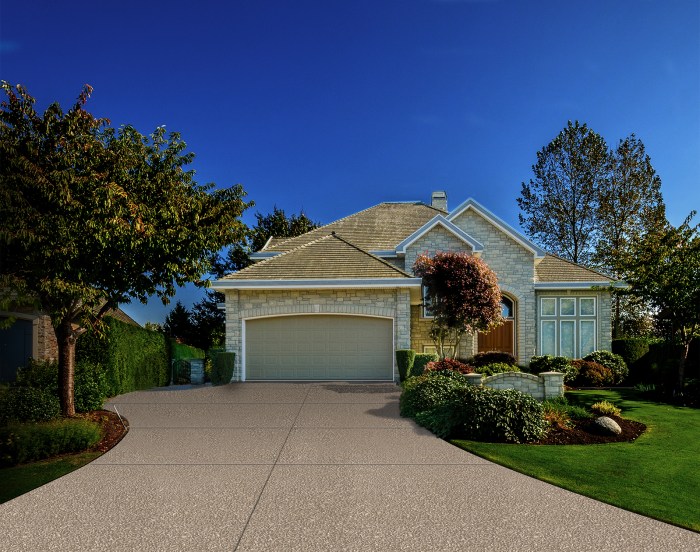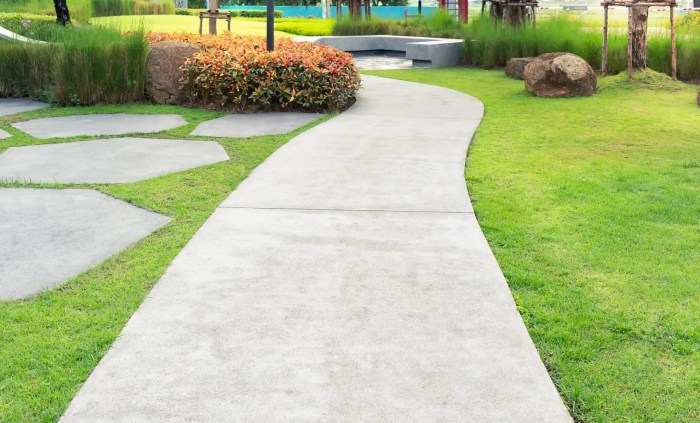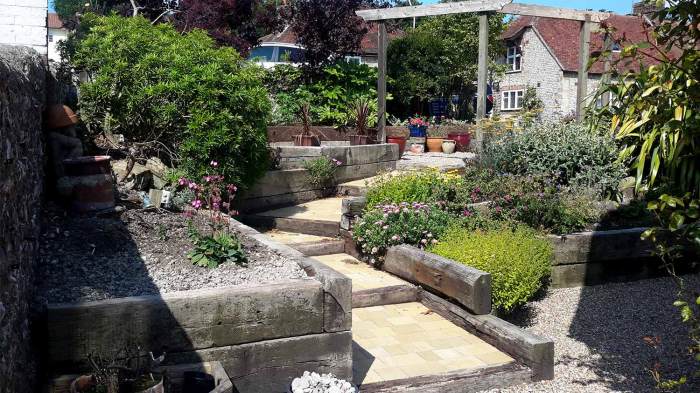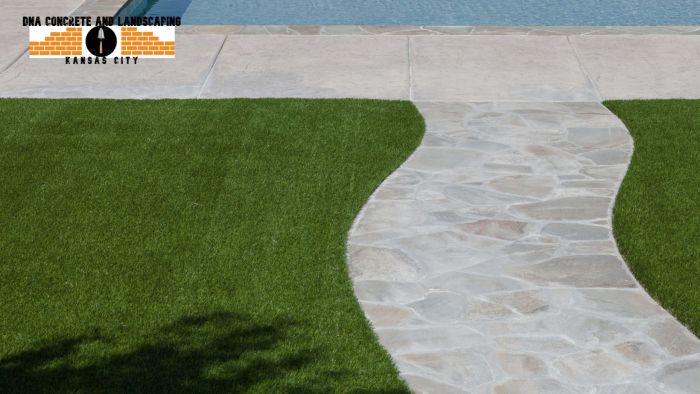Outdoor Kitchen Living Spaces Design & Build
Outdoor kitchen living spaces are transforming backyards into vibrant extensions of the home. Imagine evenings spent grilling gourmet meals under the stars, friends gathered around a crackling fire, and the aroma of delicious food filling the air. This isn’t just about cooking outdoors; it’s about creating a functional and stylish space for relaxation, entertainment, and unforgettable memories. This guide will walk you through designing, building, and maintaining your dream outdoor kitchen.
From choosing the right materials and appliances to planning the layout and integrating your kitchen with the surrounding landscape, we’ll cover everything you need to know. We’ll explore various design styles, budget considerations, and safety precautions to ensure your outdoor kitchen is beautiful and safe. Get ready to create the ultimate outdoor oasis!
Defining Outdoor Kitchen Living Spaces
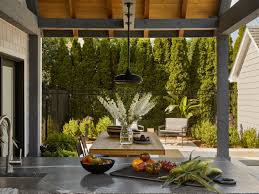
Outdoor kitchen living spaces are more than just a grill on a patio; they’re extensions of your home designed for cooking, dining, and entertaining al fresco. They offer a seamless blend of indoor comfort and outdoor enjoyment, transforming your backyard into a functional and stylish gathering place. The key difference lies in the level of integration and functionality. A standard patio or deck might have some furniture and a grill. Still, an outdoor kitchen boasts built-in appliances, counters, storage, and often even a sink and refrigerator, creating a fully equipped culinary center outdoors.
Outdoor kitchens provide a dedicated space for cooking and socializing outdoors, enhancing the overall enjoyment of your outdoor living area. This dedicated space elevates the experience beyond simply grilling, allowing for more complex meal preparation and a more integrated entertaining flow. The integration of appliances and features allows for efficient food preparation and creates a more sophisticated outdoor living environment.
Styles of Outdoor Kitchen Living Spaces
Different styles cater to various tastes and architectural preferences. A rustic outdoor kitchen might feature natural stone countertops, exposed wooden beams, and a brick or stone fireplace, creating a warm, inviting atmosphere reminiscent of a country farmhouse. In contrast, a modern outdoor kitchen might incorporate sleek stainless steel appliances, clean lines, minimalist cabinetry, and concrete or composite countertops, emphasizing a contemporary aesthetic. A minimalist design prioritizes simplicity and functionality, often featuring a streamlined layout with essential appliances and minimal ornamentation. Materials might include concrete, stainless steel, and perhaps a single striking feature like a built-in wood-fired pizza oven.
Materials Used in Outdoor Kitchen Construction
The choice of materials significantly impacts the aesthetic and durability of your outdoor kitchen. Brick offers a classic, timeless look and excellent durability, weathering the elements well. Stone, whether natural or manufactured, provides a rustic or elegant feel depending on the type and finish. Stainless steel appliances are a popular choice for their durability, ease of cleaning, and resistance to rust and corrosion. Other materials commonly used include concrete for countertops and flooring, offering a modern and robust surface. Wood, often treated for outdoor use, adds warmth and visual interest but requires regular maintenance. Composite materials, offering a blend of durability and aesthetic appeal, are also gaining popularity. The selection ultimately depends on your budget, desired style, and maintenance preferences.
Design and Layout Considerations

Designing your outdoor kitchen involves careful planning to ensure functionality, aesthetics, and efficient use of space. The layout should reflect your cooking style, the size of your outdoor area, and your budget. Consider factors like traffic flow, appliance placement, and the overall feel you want to create. Careful consideration at this stage will prevent future headaches and ensure you enjoy your outdoor kitchen for years to come.
Outdoor Kitchen Layouts: Three Design Examples
Choosing the right layout for your outdoor kitchen depends heavily on the available space and your personal preferences. Below are three distinct layouts showcasing different approaches to design and functionality.
| Layout | Description | Appliance Placement | Counter Space & Storage |
|---|---|---|---|
| Small, Linear Kitchen | Ideal for compact patios or balconies. This design maximizes space efficiency. | The grill, sink, and small prep area are arranged in a straight line. | Minimal counter space; storage may be limited to a small cabinet or shelf. |
| Medium, L-Shaped Kitchen | Provides more workspace and storage compared to the linear design, suitable for medium-sized patios or decks. | Grill positioned at one end of the “L”, sink at the other, with ample counter space in between. Storage can be integrated into the “L” shape. | Moderate counter space; storage solutions can include cabinets and drawers. |
| Large, Island Kitchen | Best suited for spacious outdoor areas. Offers significant workspace and storage. | The grill can be built into the island, with the sink and prep area on the adjacent counter. Plenty of room for additional appliances like a refrigerator or pizza oven. | Extensive counter space; abundant storage options including large cabinets, drawers, and potentially even a pantry. |
Appliance Placement: Island vs. Linear, Outdoor kitchen living spaces
The choice between an island layout and a linear layout significantly impacts workflow and the overall feel of the space.
An island layout offers a central cooking area, promoting interaction and a more social cooking experience. However, it requires more space and may not be suitable for smaller areas. The island itself can be a significant design feature, allowing for seating and additional counter space.
A linear layout is space-saving and efficient, particularly for smaller outdoor areas. It provides a streamlined workflow, with appliances arranged in a logical sequence. However, it can feel less social and may restrict movement if not planned carefully. The linear arrangement is ideal for smaller spaces where optimizing workflow is paramount.
Counter Space and Storage: Essential Considerations
Sufficient counter space and storage are critical for a functional and enjoyable outdoor kitchen. Counter space provides ample room for food preparation, while adequate storage keeps the area organized and clutter-free.
Lack of counter space can lead to cramped conditions and hinder cooking efficiency. Consider incorporating multiple levels or extending countertops to accommodate various tasks. The type of countertop material should also be chosen with durability and weather resistance in mind.
Insufficient storage can result in a cluttered and disorganized space. Plan for ample cabinet space, drawers, and potentially even a pantry for storing cooking utensils, dishes, and food items. Choose weatherproof storage solutions designed for outdoor use.
Appliances and Equipment
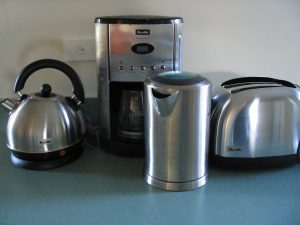
Choosing the right appliances is crucial for creating a functional and enjoyable outdoor kitchen. The selection will depend on your budget, cooking style, and the frequency of use. Consider both essential items for basic functionality and optional additions to enhance your outdoor culinary experience.
Let’s explore the appliances that can transform your outdoor space into a chef’s dream.
Essential and Optional Outdoor Kitchen Appliances
Selecting the right appliances balances practicality with your desired level of culinary ambition. Below is a breakdown of essential and optional items, highlighting their functionality and the advantages they offer.
- Grill: The undisputed king of the outdoor kitchen. Gas grills offer consistent heat, while charcoal grills provide a smoky flavor. Built-in grills often integrate seamlessly with the kitchen design.
- Refrigerator: Essential for keeping food and drinks cold, especially during longer cooking sessions. Outdoor-rated refrigerators are designed to withstand the elements.
- Sink: A crucial element for cleaning dishes and prepping ingredients. Consider a deep sink with ample counter space.
- Side Burner: A smaller burner alongside the main grill, perfect for simmering sauces or heating side dishes.
- Outdoor Oven: For baking pizzas, roasting vegetables, or even baking bread, an outdoor oven adds versatility. Pizza ovens are particularly popular additions.
- Ice Maker: Keeps the drinks flowing, especially important for larger gatherings.
- Warming Drawer: Keeps cooked food at the ideal serving temperature.
Outdoor-Rated vs. Standard Appliances
The key difference lies in their ability to withstand harsh weather conditions. Standard indoor appliances are not designed for prolonged exposure to sun, rain, and temperature fluctuations, leading to potential damage and shorter lifespans. Outdoor-rated appliances, on the other hand, are constructed with weather-resistant materials and features like sealed components to ensure durability and longevity.
For example, an outdoor-rated refrigerator will have a sealed compressor and weatherproof seals to prevent moisture damage. A standard refrigerator, exposed to the elements, would quickly malfunction.
Maintaining and Cleaning Outdoor Kitchen Appliances
Proper maintenance is key to extending the lifespan of your outdoor kitchen appliances. Regular cleaning prevents buildup and ensures optimal performance. This also contributes to food safety.
- Regular Cleaning: After each use, clean grills, burners, and cooking surfaces to remove food residue. Use appropriate cleaning agents for different materials.
- Seasonal Maintenance: Before and after the outdoor cooking season, perform a thorough cleaning. This includes checking for any damage, lubricating moving parts, and cleaning filters.
- Weather Protection: When not in use, cover appliances to protect them from rain, snow, and UV damage. Consider using appliance covers specifically designed for outdoor kitchens.
- Professional Service: Schedule annual professional maintenance for major appliances like grills and refrigerators to ensure they are operating safely and efficiently.
Integrating Outdoor Kitchen with the Surrounding Environment
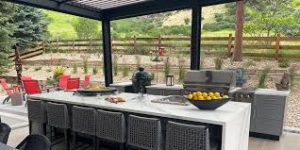
Creating a truly stunning outdoor kitchen involves more than just choosing the right appliances; it’s about seamlessly blending the space into its surroundings. A well-integrated outdoor kitchen enhances the overall aesthetic appeal of your property and creates a cohesive and inviting living area. This involves careful consideration of materials, lighting, and landscaping techniques.
Imagine a Mediterranean-style outdoor kitchen nestled amongst lush greenery, adjacent to a sparkling pool. The kitchen itself is constructed from warm-toned, natural stone – perhaps travertine or limestone – echoing the colors of the surrounding landscape. The countertops are a durable, yet elegant, granite, chosen for its heat resistance and easy maintenance. A pergola, crafted from weathered wood, provides shade and creates a defined space while climbing vines add a touch of romance and visual interest. The pool’s turquoise water complements the stone’s earthy tones, creating a visually harmonious space. Low-lying, drought-resistant shrubs and flowering plants soften the edges of the kitchen, creating a natural transition between the built environment and the surrounding garden. The overall effect is one of relaxed sophistication, where the kitchen feels like a natural extension of the landscape, rather than a separate structure.
Outdoor Kitchen Lighting Design
Proper lighting is crucial for both the functionality and ambiance of an outdoor kitchen. Effective lighting enhances safety, improves visibility for cooking, and sets the mood for evening gatherings. Consider a layered lighting approach. Recessed lighting in the pergola or under the countertops provides functional illumination for food preparation. Ambient lighting, such as strategically placed pathway lights or string lights draped across the pergola, creates a warm and inviting atmosphere. Accent lighting can highlight specific features, like a water feature or a unique plant, adding visual interest. For instance, uplighting the surrounding trees can create a dramatic effect at night, while low-voltage landscape lighting subtly illuminates pathways and walkways. Choosing warm-toned LED lighting, rather than harsh, cool-toned lighting, will create a more relaxed and inviting space.
Landscaping Techniques for Cohesive Outdoor Living
Landscaping plays a vital role in unifying the outdoor kitchen with its surroundings. Consider using plants to create visual transitions and define different areas within the space. For example, taller plants or trees can screen the kitchen from other parts of the yard, creating a sense of privacy and intimacy. Smaller shrubs and flowering plants can soften the edges of hard surfaces, such as the patio or pool deck. The use of pathways, made from materials like natural stone or pavers, can guide movement and create a sense of flow between different areas. Consider incorporating water features, such as a small fountain or pond, to add a calming element to the space. The overall goal is to create a seamless transition between the built environment and the natural landscape, ensuring that the outdoor kitchen feels like an integrated part of the larger outdoor living space. Maintaining a consistent color palette throughout the landscape and the kitchen design will further enhance the feeling of unity and cohesion.
Budgeting and Cost Considerations: Outdoor Kitchen Living Spaces
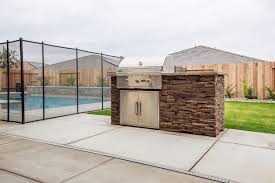
Building your dream outdoor kitchen involves careful planning, and a realistic budget is crucial. Costs can vary significantly depending on your location, the complexity of the design, and the materials chosen. Understanding these costs upfront helps prevent unexpected expenses and ensures a smooth project.
Creating a detailed budget is essential for managing your outdoor kitchen project effectively. This includes accounting for materials, appliances, labor, and any unforeseen expenses that might arise during construction.
Average Costs of Building an Outdoor Kitchen
The overall cost of building an outdoor kitchen can range widely. To give you a clearer picture, let’s break down the average costs into key categories. These are estimates, and actual costs may vary based on your specific choices and location.
| Category | Low-End Estimate | Mid-Range Estimate | High-End Estimate |
|---|---|---|---|
| Materials (cabinets, countertops, etc.) | $2,000 – $5,000 | $5,000 – $15,000 | $15,000 – $30,000+ |
| Appliances (grill, refrigerator, sink, etc.) | $2,000 – $5,000 | $5,000 – $15,000 | $15,000 – $30,000+ |
| Labor (installation, plumbing, electrical) | $2,000 – $5,000 | $5,000 – $10,000 | $10,000 – $20,000+ |
| Total Estimated Cost | $6,000 – $15,000 | $15,000 – $40,000 | $40,000 – $80,000+ |
Tips for Saving Money
While building a high-end outdoor kitchen is a rewarding experience, it’s possible to achieve a fantastic result without breaking the bank. Consider these money-saving strategies:
By carefully planning and making smart choices, you can significantly reduce the overall cost of your project while still enjoying a beautiful and functional outdoor kitchen.
- Source materials yourself: Purchasing materials directly from suppliers can often save you money compared to using a contractor’s markup.
- DIY where possible: If you have some DIY skills, tackling simpler tasks like painting or assembling cabinets can significantly reduce labor costs. However, always prioritize safety and your skill level.
- Choose budget-friendly materials: Explore less expensive alternatives for countertops (like concrete or tile) and cabinets (like pressure-treated lumber).
- Shop around for appliances: Compare prices from different retailers and consider buying appliances during sales or clearance events.
- Prioritize essential appliances: Focus on the must-have appliances first, and add extras later as your budget allows.
Return on Investment
Adding an outdoor kitchen can significantly enhance your property’s value and appeal to potential buyers. While the exact ROI varies depending on location, market conditions, and the quality of the build, many homeowners find it’s a worthwhile investment. For example, a well-designed and constructed outdoor kitchen in a desirable neighborhood could potentially add 10-20% or more to a home’s resale value, recouping a significant portion of the initial investment.
Furthermore, an outdoor kitchen increases the usable living space of your home, providing a significant boost to enjoyment and lifestyle. This increased enjoyment can be considered an intangible ROI, difficult to quantify but undeniably valuable.
Safety and Maintenance

Building and maintaining a safe and functional outdoor kitchen requires careful planning and ongoing attention. Ignoring safety precautions or neglecting regular maintenance can lead to accidents, damage, and ultimately, a shorter lifespan for your investment. This section Artikels crucial safety measures and a comprehensive maintenance plan to ensure your outdoor kitchen remains a safe and enjoyable space for years to come.
Potential Safety Hazards and Mitigation Strategies
Prioritizing safety is paramount when designing and using an outdoor kitchen. Several potential hazards need to be addressed proactively to prevent accidents and injuries.
- Fire Hazards: Grills, ovens, and other cooking appliances pose a significant fire risk. Solutions include installing fire-resistant materials, keeping a fire extinguisher readily accessible (a Class K extinguisher is ideal for grease fires), and ensuring adequate clearance around appliances. Regular cleaning of grease and debris is also crucial.
- Gas Leaks: Gas appliances require careful installation and regular inspection to prevent leaks. Install gas leak detectors near appliances and ensure all connections are properly sealed. Regularly check for leaks using soapy water; bubbles indicate a leak requiring immediate professional attention.
- Electrical Hazards: Outdoor electrical outlets and appliances must be protected from moisture and weather. Use GFCI (Ground Fault Circuit Interrupter) protected outlets to prevent electrical shocks. Ensure all wiring is properly insulated and protected from damage.
- Sharp Objects and Hot Surfaces: Knives, skewers, and hot surfaces pose a risk of cuts and burns. Store knives safely, use oven mitts and pot holders, and ensure children are supervised near the cooking area. Install adequate lighting to improve visibility and prevent accidents.
- Slip and Fall Hazards: Wet surfaces can cause slips and falls. Use non-slip flooring materials and ensure proper drainage to prevent water accumulation. Keep the area clean and free of debris.
Outdoor Kitchen Maintenance Plan
A regular maintenance schedule is essential for preserving the longevity and safety of your outdoor kitchen. This plan Artikels cleaning schedules and preventative measures to keep your space in top condition.
- Daily Cleaning: After each use, wipe down countertops, grills, and appliances. Remove grease and food debris to prevent buildup and potential fire hazards. Empty grease traps regularly.
- Weekly Cleaning: More thorough cleaning is needed weekly. This includes scrubbing surfaces, cleaning appliances more deeply, and inspecting for any signs of damage or wear. Check gas connections for leaks.
- Monthly Cleaning: Perform a more comprehensive cleaning, including cleaning the inside of appliances (ovens, refrigerators), checking and cleaning filters, and inspecting all equipment for wear and tear.
- Seasonal Maintenance: Before and after the main cooking season (depending on your climate), perform a thorough cleaning and inspection. This may include winterizing gas lines or covering appliances to protect them from the elements.
- Annual Inspection: A yearly professional inspection is recommended. A qualified technician can check for gas leaks, electrical issues, and any other potential safety hazards. They can also advise on necessary repairs or replacements.
Regular Inspections and Repairs
Regular inspections are not just about cleanliness; they are crucial for identifying potential problems before they escalate into costly repairs or safety hazards. Early detection of issues like rust, loose connections, or damaged components can prevent accidents and extend the life of your outdoor kitchen. A proactive approach to maintenance ensures your investment remains safe and functional for many years. For example, neglecting a small crack in a gas line could lead to a dangerous leak, while ignoring rust on a grill could compromise its structural integrity and create a fire hazard. Prompt repairs are vital to maintaining the safety and functionality of your outdoor kitchen.
Last Recap

Creating an outdoor kitchen is an investment in both your home’s value and your lifestyle. By carefully considering design, appliances, budget, and safety, you can transform your outdoor space into a welcoming and functional area for years to come. Remember, the key is to personalize your design to reflect your style and needs, creating a space that perfectly complements your home and enhances your outdoor living experience. So, start planning your dream outdoor kitchen today and get ready to enjoy the ultimate in outdoor living!

